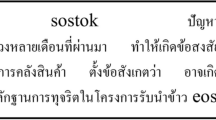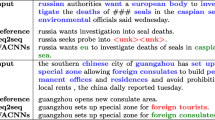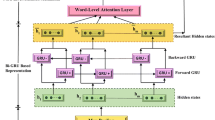Abstract
Recurrent Neural Networks (RNN) and their variants like Gated Recurrent Units (GRUs) have been the de-facto method in Natural Language Processing (NLP) for solving a range of NLP problems, including extractive text summarization. However, for certain sequential data with multiple temporal dependencies like the human text data, using a single RNN over the whole sequence might prove to be inadequate. Transformer models that use multiheaded attention have shown that human text contains multiple dependencies. Supporting networks like attention layers are needed to augment the RNNs to capture the numerous dependencies in text. In this work, we propose a novel combination of RNNs, called Parallel RNNs (PRNN), where small and narrow RNN units work on a sequence, in parallel and independent of each other, for the task of extractive text summarization. These PRNNs, without the need for any attention layers, capture various dependencies present in the sentence and document sequences. Our model achieved a 10% gain in ROUGE-2 score over the single RNN model on the popular CNN/Dailymail dataset. The boost in performance indicates that such an ensemble arrangement of RNNs improves the performance compared to the standard single RNNs, which alludes to the fact that constituent units of the PRNN learn various input sequence dependencies. Hence, the sequence is represented better using the combined representation from the constituent RNNs.


Similar content being viewed by others
Availability of data and materials
The dataset used in this study is open-source in nature and is not propriety.
Code availability
The source code can be made available on request.
References
Al-Sabahi K, Zuping Z, Nadher M (2018) A hierarchical structured self-attentive model for extractive document summarization (hssas). IEEE Access 6:24205–24212
Baralis E, Cagliero L, Mahoto N et al (2013) Graphsum: discovering correlations among multiple terms for graph-based summarization. Inf Sci 249:96–109
Cao Z, Li W, Li S et al (2016) Attsum: joint learning of focusing and summarization with neural attention. In: Proceedings of COLING 2016, the 26th international conference on computational linguistics: technical papers, pp 547–556
Chen X, Gao S, Tao C et al (2018) Iterative document representation learning towards summarization with polishing. In: Proceedings of the 2018 conference on empirical methods in natural language processing, pp 4088–4097
Cheng J, Lapata M (2016) Neural summarization by extracting sentences and words. In: Proceedings of the 54th annual meeting of the association for computational linguistics (volume 1: long papers), pp 484–494
Cho K, Van Merriënboer B, Gulcehre C et al (2014) Learning phrase representations using rnn encoder-decoder for statistical machine translation. arXiv preprint arXiv:14061078
Erkan G, Radev DR (2004) Lexrank: graph-based lexical centrality as salience in text summarization. J Artif Intell Res 22:457–479
Fattah MA (2014) A hybrid machine learning model for multi-document summarization. Appl Intell 40(4):592–600
Fattah MA, Ren F (2009) Ga, mr, ffnn, pnn and gmm based models for automatic text summarization. Comp Speech Lang 23(1):126–144
Harabagiu S, Lacatusu F (2010) Using topic themes for multi-document summarization. ACM Trans Inf Syst (TOIS) 28(3):13
Hermann KM, Kocisky T, Grefenstette E et al (2015) Teaching machines to read and comprehend. In: Advances in neural information processing systems, pp 1693–1701
Hidasi B, Quadrana M, Karatzoglou A et al (2016) Parallel recurrent neural network architectures for feature-rich session-based recommendations. In: Proceedings of the 10th ACM conference on recommender systems, ACM, pp 241–248
Ko Y, Seo J (2008) An effective sentence-extraction technique using contextual information and statistical approaches for text summarization. Pattern Recogn Lett 29(9):1366–1371
Kryscinski W, Keskar NS, McCann B et al (2019) Neural text summarization: a critical evaluation. In: Proceedings of the 2019 conference on empirical methods in natural language processing and the 9th international joint conference on natural language processing (EMNLP-IJCNLP), pp 540–551
Kryściński W, McCann B, Xiong C et al (2019) Evaluating the factual consistency of abstractive text summarization. arXiv preprint arXiv:191012840
Lin CY, Hovy E (2003) Automatic evaluation of summaries using n-gram co-occurrence statistics. In: Proceedings of the 2003 human language technology conference of the North American chapter of the association for computational linguistics, pp 150–157
Liu Y (2019) Fine-tune BERT for extractive summarization. CoRR arXiv:1903.10318
Liu Y, Lapata M (2019) Text summarization with pretrained encoders. In: Proceedings of the 2019 conference on empirical methods in natural language processing and the 9th international joint conference on natural language processing (EMNLP-IJCNLP), pp 3721–3731
Luhn HP (1958) The automatic creation of literature abstracts. IBM J Res Dev 2(2):159–165
Mann WC, Thompson SA (1988) Rhetorical structure theory: toward a functional theory of text organization. Text interdiscipl J Study Discourse 8(3):243–281
Mikolov T, Sutskever I, Chen K et al (2013) Distributed representations of words and phrases and their compositionality. In: Advances in neural information processing systems, pp 3111–3119
Mirshojaee SH, Masoumi B, Zeinali E (2020) Mamhoa: a multi-agent meta-heuristic optimization algorithm with an approach for document summarization issues. J Ambient Intell Human Comput 1–16
Nallapati R, Zhai F, Zhou B (2017) Summarunner: A recurrent neural network based sequence model for extractive summarization of documents. In: Thirty-first AAAI conference on artificial intelligence
Sheela J, Janet B (2020) An abstractive summary generation system for customer reviews and news article using deep learning. J Ambient Intell Human Comput 1–11
Subramanian S, Li R, Pilault J et al (2019) On extractive and abstractive neural document summarization with transformer language models. arXiv preprint arXiv:190903186
Wei R, Huang H, Gao Y (2019) Sharing pre-trained bert decoder for a hybrid summarization. In: China national conference on Chinese computational linguistics, Springer, pp 169–180
Zhang H, Cai J, Xu J et al (2019) Pretraining-based natural language generation for text summarization. In: Proceedings of the 23rd conference on computational natural language learning (CoNLL). Association for computational linguistics, Hong Kong, China, pp 789–797, https://doi.org/10.18653/v1/K19-1074, https://www.aclweb.org/anthology/K19-1074
Zhong M, Liu P, Wang D et al (2019) Searching for effective neural extractive summarization: What works and what’s next. In: Proceedings of the 57th annual meeting of the association for computational linguistics, pp 1049–1058
Zhou Q, Yang N, Wei F et al (2018) Neural document summarization by jointly learning to score and select sentences. In: Proceedings of the 56th annual meeting of the association for computational linguistics (volume 1: long papers), pp 654–663
Zhu D, Shen S, Dai XY et al (2017) Going wider: recurrent neural network with parallel cells. arXiv preprint arXiv:170501346
Acknowledgements
The authors would like to express their gratitude to Indian Institute of Technology Mandi and Islamic University of Science and Technology, which provided the necessary infrastructure for carrying out this work. Special thanks are extended to Dr. Khalid Pandit for providing access to Grammarly.
Funding
The research of the first author is funded by Visvesvaraya PhD scheme for Electronics & IT, Ministry of Electronics and IT, India and National Project Implementation Unit funded TEQIP-III project of Ministry of Education, India via the Collaborative Research Scheme.
Author information
Authors and Affiliations
Corresponding author
Ethics declarations
Conflict of interest
The authors declare that they have no conflict of interest.
Ethics approval
Not applicable.
Consent to participate
Not applicable.
Consent for publication
Not applicable.
Additional information
Publisher's Note
Springer Nature remains neutral with regard to jurisdictional claims in published maps and institutional affiliations.
Rights and permissions
About this article
Cite this article
Dar, R., Dileep, A.D. Small, narrow, and parallel recurrent neural networks for sentence representation in extractive text summarization. J Ambient Intell Human Comput 13, 4151–4157 (2022). https://doi.org/10.1007/s12652-021-03583-1
Received:
Accepted:
Published:
Issue Date:
DOI: https://doi.org/10.1007/s12652-021-03583-1




